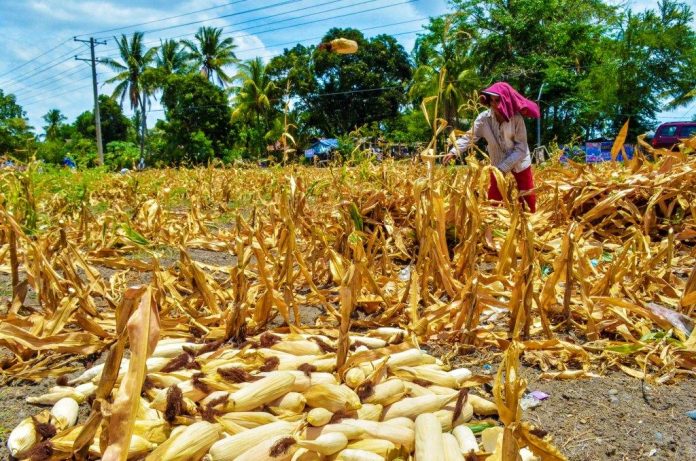
ILOILO – This province’s losses in rice production due to the El Niño phenomenon have reached P1,025,650,277.63 equivalent to 63,000 metrics tons, and the number of farmers affected 26,966, according to the Provincial Agriculture Office (PAO).
All of Iloilo’s 42 towns and lone component city of Passi reported losses these past five months beginning October 2018 due to a marked decrease in rainfall.
But farmers may not have seen the worst yet. The “weak” El Niño phenomenon may cause drier and warmer conditions nationwide this month, warned the Philippine Atmospheric, Geophysical and Astronomical Services Administration (Pagasa) as it announced the onset of the dry season.
“Normally, the dry season begins in April. Since it started early, the duration will also be a bit prolonged,” said Pagasa climate monitoring chief Analiza Solis.
Iloilo province’s losses covered 27,063.51 hectares of rice fields (7,495.42 hectares totally damaged and 19,568.09 hectares partially) out of 31,718.70 hectares of standing crops.
These could further increase, warned PAO assistant chief Elias Sandig Jr.
PAO has yet to factor the losses in other agricultural commodities such as corn, vetagles and livestock.
Data collection is ongoing to determine if a declaration of a state of calamity is warranted, said Sandig.
But aside from losses in agriculture, the PAO is also collecting data on the number of households affected by water scarcity.
Sandig said the data collection may be completed before the end of April.
For the provincial government to declare a state of calamity at least 20 percent of the population must be ascertained to be affected by water scarcity.
Meanwhile, Sandig urged farmers to learn being resilient to climate change, that is, plant crops that need less watering during extended periods of the dry season.
“Ang problema naton sa culture sang farmers is wala mahadlok magtanum sang humay nga nagapakadto sa tag-init pero tudloan mo magtanum sang humay nga pakadto sa tig-ulolan ginakulbaan pa,” said Sandig.
In January, PAO advised farmers not to plant palay and other water-intensive crops such as corn this first three months of 2019 due to a projected delay in the rainy season. Farmers should instead plant alternative high-value crops that do not need as much water as palay such as bulb onions and watermelons.
PAO further advised farmers to register with their respective municipal agriculture offices to avail themselves of crop insurance from the Philippine Crop Insurance Corp., an attached agency of the Department of Agriculture.
In its Climate Outlook for the year, Pagasa stated that the first three months of the year will likely be more sweltering compared to the same period in 2018 because of lessened rainfall and dry winds caused by El Niño.
It expects the dryness to begin easing around May, forecasting near-normal rainfall by then in most parts of Northern Luzon and Mindanao. Near-normal rainfall is possible in most parts of the Visayas and Mindanao this June.
Pagasa described drought as three consecutive months of way below normal rainfall (60 percent reduction from average) or five consecutive months of below normal rainfall condition (21 percent to 60 percent reduction from average).
A “dry spell” is defined as three consecutive months of below normal rainfall (21 percent to 60 percent reduction from average) or two months of consecutive way below normal rainfall (more than 60 percent reduction from average).
Dry condition is defined as having two consecutive months of below normal rainfall (21-60 percent drop in average rainfall)./PN



